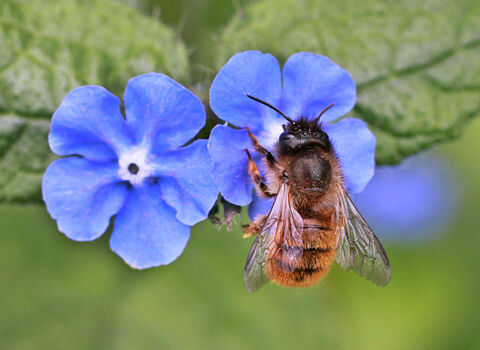
©Penny Frith
Red mason bee male © Leanne Manchester
Red mason bee male © Leanne Manchester 2
Red mason bee
The red mason bee is a common, gingery bee that can be spotted nesting in the crumbling mortar of old walls. Encourage bees to nest in your garden by putting out a tin can full of short, hollow canes.
